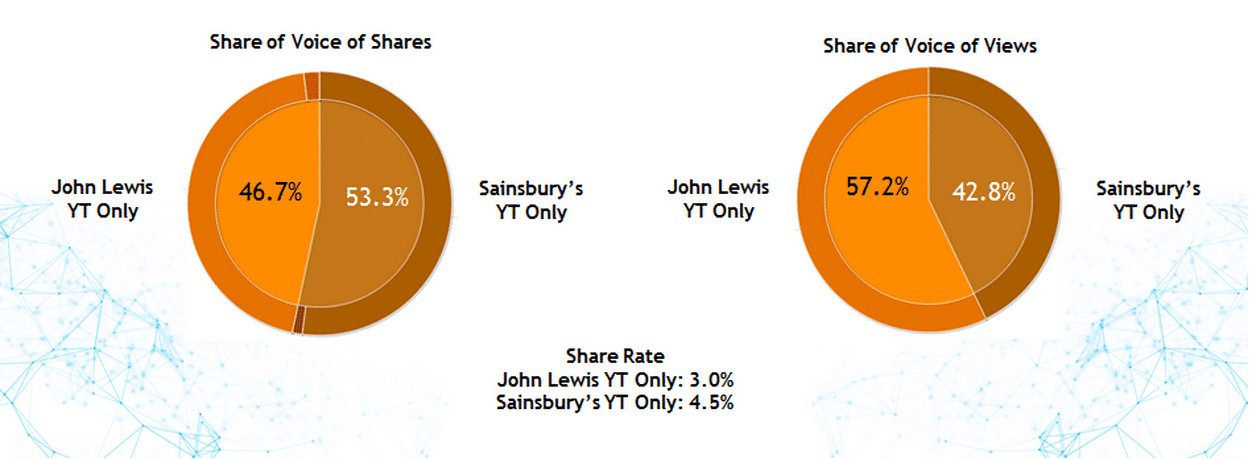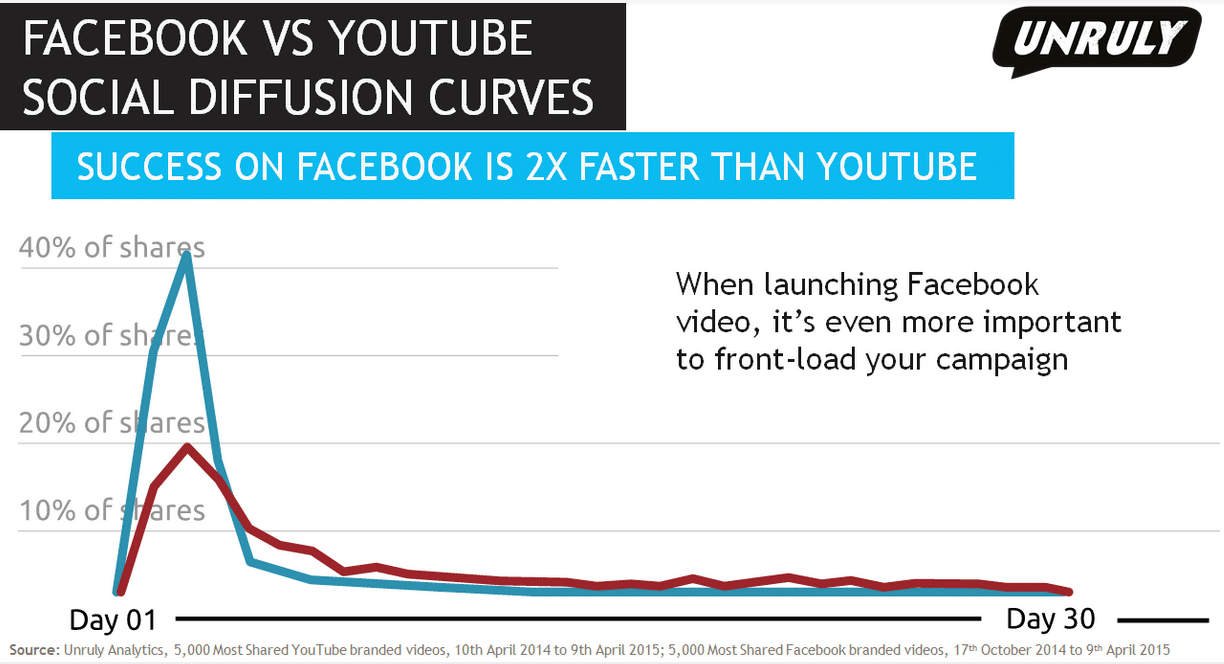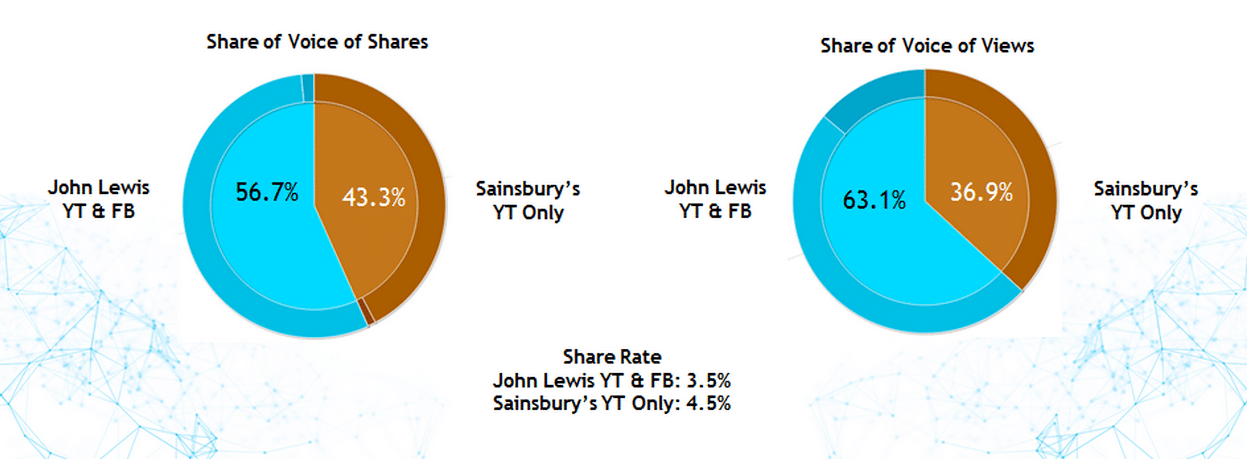The 12 Plays Of Christmas: The Really Early Guide On How To Create The Perfect Festive Ad (Part 3)
It’s Chriiiissstmasss! No, really. There may not be any mistletoe or wine on show right now, but brand managers are already busy plotting their festive ad campaigns.
But don’t worry, Unruly has been tracking the most shared Xmas ads since 2006 and, using data collected by our Unruly ShareRank algorithm and our Unruly Custom Audiences platform on some of the biggest hits of 2014, and we have come up with some content and distribution tips on how to create the perfect Christmas campaign.
Unfortunately, we have so much to talk about we’ve had to split it into four parts. We’ve already brought you Part one and Part two of the series, so make sure you have read these before feasting your festive advertising eyes on Part three.
So, sit back with some eggnog or mulled wine and enjoy!
Play 7: Support very shareable content with paid views to drive shares
One of the biggest mistakes brands make when they are launching a video online is to think that good content will somehow rise to the surface no matter what. That people will find it and share it.
It doesn’t work like that. There’s so much content in our social feeds these days, it’s harder than ever to stand out from the crowd. This is why it’s more important than ever before for brands to have a smart distribution strategy in place to make sure people are seeing their content.
Your distribution strategy is just as important as your content strategy. In fact, author Dr Karen Nelson-Field recently suggested that “distribution is king and content is queen”.
Looking at the battle between John Lewis’s Christmas ad, which managed just over a million shares, and Sainsbury’s ad, which attracted 770,045, and you can see the crucial role distribution can play.
Comparing the two creatives using our Unruly ShareRank algorithm – which allows advertisers to maximize the social impact of their video content – both scored very highly. “Monty the Penguin” managed a very high score of 8.9 out of 10, while Sainsbury’s ad was just below on 8.8. Both are very shareable ads. Both should have got around the same share rates (the % of people who watched the ad and shared it).
However, when you look purely at how the two ads performed on YouTube alone (Sainsbury’s did not release a version on the Facebook video player), you can see that despite attracting more shares for its YouTube version, Sainsbury’s attracted far fewer views (23.6 million YT views v 17.2 million YT views).
Why the disparity? Well, it suggests that John Lewis simply had a bigger budget to spend. If Sainsbury’s had matched John Lewis’s number of views or used a different distribution strategy that ensures the video had been seen in environments where they are more likely to share, it could have generated another 250,000+ shares. Enough to overtake Monty.
On the flip side, after spending so much cash, John Lewis should be investing its budget in formats that actively encourage sharing and are designed to engage viewers, not irritate them. With ad blocking on the increase, this is crucial for brands.

Play 8: Embrace multiple platforms other than just YouTube
We’ve entered a post-YouTube era, with the online video market is as fragmented as it has ever been. Once synonymous with online video, YouTube’s share of the online video market has shrunk significantly, from 46.5% in January 2012 down to just 21.1% by the start of 2015, according to comScore.
There’s no doubt that Facebook’s video player, which now accounts for around 18% of all video views online, has played a part in this. You only need to look at this year’s Super Bowl to see the impact Facebook has had on online video consumption. With all but a handful of sponsors pushing out versions across both Facebook and YouTube, the overall number of shares increased by 73% to 9 million shares – the most in Super Bowl history.
Looking once again at John Lewis and Sainsbury’s campaigns, one of the biggest differences between the two strategies was that while the former released versions on both Facebook and YouTube’s players, Sainsbury’s only released its version on YouTube, which it then uploaded on to its Facebook page.
This difference in strategy could well have been the difference between the two. Facebook videos are shared quicker than YouTube videos – almost twice as fast (see below).

Why is this important? Because the speed of sharing has never been faster – and it showing no signs of slowing down. Almost half (44%) of an average video’s shares occur in the first three days after launch, and it’s growing rapidly, up from 22% in 2013.
This highlights the importance of considering the early days of your campaign to make the most of this viral peak.
No other Xmas campaign in the UK has generated as many shares in its first 24 hours than John Lewis’s 2014 commercial “Monty The Penguin”. The ad was shared 202,953 times in its first day, beating the previous record held by the retail chain’s 2013 effort “Bear and the Hare“, which managed 198,244 shares at the same point.
But what is really interesting in where the bulk of the sharing occurred. John Lewis launched the same ad on YouTube and Facebook Video, but it was the social media platform’s version which drove the early success, accounting for around 66% of the shares during the first 24 hours. The YouTube version eventually overtook the Facebook version for the number of shares, but it was the latter which gave Monty the perfect start.
Sainsbury’s, which did not have a Facebook version, managed 67,443 shares in its first 24 hours, putting it well behind its rival in these crucial early stages.
In the long run, this helped John Lewis’s ad attract more shares and more views than Sainsbury’s commercial (see below).

However, if Sainsbury’s had also released a version on platforms other than YouTube, it could have been a different story. As mentioned before, John Lewis’s campaign managed more than 1 million shares overall, putting it well ahead of its Xmas UK rival, which managed 770,045 shares. But if you look purely at the two ads’ performances on YouTube alone, Sainsbury’s ad attracted a lot more shares than John Lewis’ video (676,480).
Could releasing a version of “Christmas is for Sharing” on Facebook have been enough to dethrone Monty? I guess we will never know.
But it’s not just about Facebook and YouTube. The most successful brands at the Super Bowl, for example, used a range of platforms, including short-form players such as Vine and Instagram, to tease, trend and extend their campaigns around Super Bowl Sunday.
For example, Budweiser’s “Lost Dog” – the most shared ad of the 2015 Super Bowl – put out teaser campaigns across Vine, Instagram, YouTube and Facebook ahead of the launch of their main game ad.
Play 9: Use a distribution partner that can activate the Open Web
As Facebook and YouTube continue to slug it out during 2015, what’s important to remember is the remaining 60% of video views which are occurring outside of either of these two platforms.
Indeed, it’s beyond these walled gardens – across the “Open Web” – that the real opportunities lie for smart marketers. So look beyond just YouTube and Facebook if you want to really set the web alight.
OK, that’s the end of part three. Stay tuned for part four next week!
[pardot-form id=”4616″ title=”Trending Content Sign Up”]
